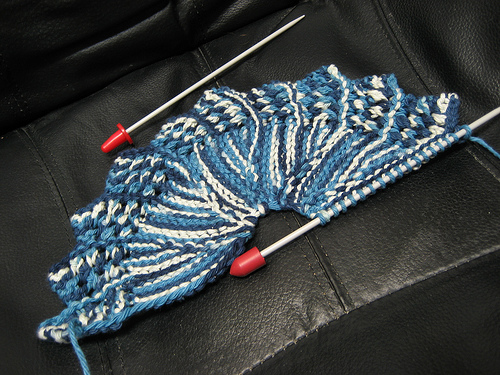Mastering the art of short row knitting

For the last month or so, my primary knitting project has been one that is made up almost entirely out of short rows: the Tilt & Twist socks, which is an amazing pattern that is also somewhat challenging. (In fact, for my first pair, I decided to only use two colors, and not to tilt or twist them at all.)
For the most part, short rows are used to shape and add three dimensionality. You don't often encounter short rows used so that you can do intarsia in the round, although that is how this sock pattern uses them. Wingspan uses short rows to make the scarf into an arc shape. Huggable Hedgehogs uses short rows to create the adorable rounded hedgehog body.
In a short row, you basically stop partway through the regular row, turn around, and work back. The name is apt.
There are two basic kinds of short rows: "wrap and turn" and just plain "turn." Turn is easier and less fiddly. However, wrap and turn gives you a nicer-looking result, because it avoids the hole that you often get when you just turn your work.
I have a long history of losing count with short rows. For patterns where you have to count between your turns, I use a stitch marker. When I get to the marker, I pick it up and hold it between my lips until I turn the work and put it back on the needle. This works well, but I have to remember not to do it when I'm knitting in public.
Here's a clever short row trick. It work for patterns where you eventually go back and knit across all of the short rows, as often happens in a short row sock heel. Pick up the wraps, but don't knit them together with the stitch they wrap: knit them together with the next stitch in the line. This tugs the stitch to the left, which also helps to close the hole.
Image courtesy Flickr/sarkasmo

0 comments